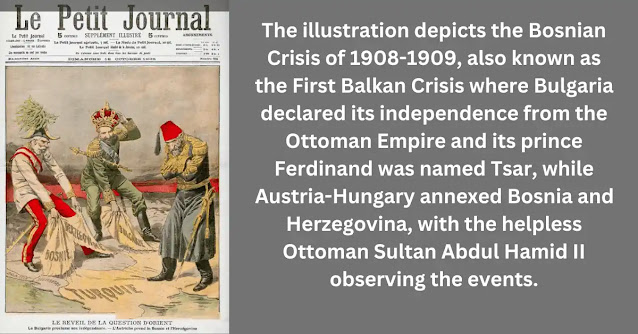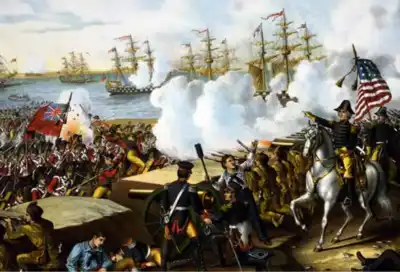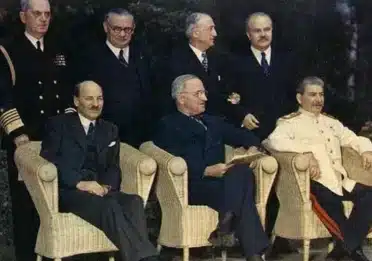Cossack Mercenaries and Colonialism: Yermak’s Tale in Russia’s History
Russia is often overlooked in discussions of colonialism, perhaps due to its unique geography or limited linguistic access. However, Russian Expansion History reveals a powerful mission for dominance across the Eurasian mainland, beginning in the 16th century. This history traces two key phases: the territorial expansion of the Russian Empire and the internal colonization during the Soviet era.
The initial wave of expansion took place during the Russian Empire, representing a period of territorial expansion and geopolitical influence. This period laid the foundation for the Russian state’s persistent efforts to establish a presence across the vast Eurasian area.
The second phase emerged during the Soviet era, characterized by internal colonization within the borders of the USSR. This era witnessed diverse forms of colonization, such as “collectivization,” the “involuntary resettlement” of prisoners to gulag camps, Stalin’s strategic “population transfer,” and the “Northern Benefits” voluntary resettlement programs.
💻 Table of Contents:
- Yakutia: Russia’s Largest Republic in the Far East
- Yermak Timofeyevich: Conqueror of the Khanate of Sibir
- Integration into the Russian Empire: Siberian Governorate and Yakutsk Oblast
- Sakha’s Official Recognition: The Formation of the Sakha (Yakutia) Republic
 |
| Russian Cossacks |
This article zooms in on one specific ethnic group, the Sakha, within Yakutia/YASSR, to illustrate how Russian state colonization campaigns shaped their history within the context of Russian expansion history. The impact of colonialism on the Sakha people is not widely studied, despite their past sharing similarities with other regions that have gained independence from Russian rule.
Yakutia: Russia’s Largest Republic in the Far East
The Republic of Sakha, also known as Yakutia, is the largest republic in Russia, situated in the Russian Far East. It covers over 3 million square kilometers and has a population of approximately one million. Yakutsk, the capital and largest city, holds the distinction of being the world’s coldest major city. The region experiences an extreme and severe climate, with exceptionally low temperatures recorded in places like Verkhoyansk and Oymyakon.
Sakha has a diverse history, initially inhabited by Tungusic and Paleosiberian peoples such as the Evenks and Yukaghirs. The Turkic Sakha people, also known as Yakuts, settled in the area of Sakha (Yakutia) during the 9th to 16th centuries, potentially through multiple migration waves. They migrated northward from the region around Lake Baikal to the middle Lena River, driven by pressure from the Buryats, a Mongolic group.
 |
| Siberian Cossacks visiting new lands XVIII century |
As the Sakha people established themselves, they displaced the earlier, smaller populations who relied on hunting and raising reindeer (a species of deer, native to Arctic, subarctic, tundra, boreal, and mountainous regions of Northern Europe, Siberia, and North America). The Sakha familiarized essentials of a cattle-based economy, commonly found in Central Asia, to the region. Over time, the indigenous populations of Paleosiberian and Tungusic origins were largely assimilated into the Sakha culture by the 17th century.
The Russian colonization of the region began in the 17th century when Yakutsk Oblast (A geographic area that included the land inhabited by the Yakut people and other indigenous groups in the region) was incorporated into the Tsardom of Russia. The indigenous population was obliged to pay animal pelt (fur/leather/skin) tribute during this period.
Following the Russian conquest, the Sakha population initially experienced a decline. However, the native Yakuts, who are an ethnic group within the Sakha population, gradually expanded their territory. As they expanded, they came into contact with and displaced other indigenous groups who inhabited the region prior to their arrival. This process involved the Yakuts asserting their dominance over the land and resources, potentially leading to the displacement or assimilation of the pre-existing indigenous groups.
 |
| Conquest of Siberia by Yarmak |
During the Russian Civil War, Yakutia witnessed some of the final battles, and in 1922, the Bolshevik authorities reorganized Yakutsk Oblast into the autonomous Yakut ASSR. The Soviet era brought an influx of Slavic immigrants, particularly Russians and Ukrainians, to the region, reflecting key themes in Russian expansion history. On September 27, 1990, the Yakutskaya-Sakha Soviet Socialist Republic was established, and on December 27, 1991, it became the Republic of Sakha (Yakutia).
Yermak Timofeyevich: Conqueror of the Khanate of Sibir
The Khanate of Sibir, also known as the Siberian Yurt or Khanate of Turan, was a historical kingdom in southwestern Siberia ruled by Turco-Mongol dynasties like the Shaybanids and Taibugids, who traced their lineage to Genghis Khan. Its conquest marked a pivotal moment in Russian Expansion History, as it opened the door to Siberia’s vast resources and territories.
It was located in a region that was previously part of the Mongol Empire and later ruled by the White Horde and the Golden Horde, was home to a diverse array of ethnic groups. These included Turkic peoples, Bashkirs, Siberian Tatars, as well as speakers of Uralic languages such
as Khanty, Mansi, and Selkup. Notably, it was the northernmost Muslim state in recorded history.
During the time of Russian Tsar Ivan the Terrible, Yermak Timofeyevich, a Cossack leader, began the eastward expansion into Siberia, driven by the Russians’ interest in fur trade. In 1552, Ivan the Terrible’s army overthrew the Tatar Khanate of Kazan, providing an entrance into Siberia. Seeking to expand further, the Stroganov merchant family recruited Cossack fighters in the late 1570s, with Yermak chosen as their leader. In 1582, Yermak led an army of 840 to attack the Khanate of Sibir, achieving a significant victory on October 26, 1582, at Qashliq, marking the “conquest of Siberia.”
 |
| Russian Far East regions map |
Integration into the Russian Empire: Siberian Governorate and Yakutsk Oblast
After the defeat of the Khanate of Sibir, Tygyn Darkhan, a king of the Khangalassky Sakha, played a pivotal role by granting territory for Russian settlement in exchange for a military pact.
This pact included alliance against indigenous rebels across North Eastern Asia, spanning regions such as Magadan, Chukotka, Kamchatka, and Sakhalin. This collaboration not only facilitated Russian settlement and expansion but also played a vital role in securing their influence in the regions mentioned.
The historical events and the military pact between the Khangalassky Sakha and the Russian settlers were significant milestones in the eastward expansion of the Russian Empire. They allowed for the consolidation of Russian control and the establishment of a stronger presence in North Eastern Asia.
In the 17th century, the Moscow Government established Lensky Ostrog, which later became Yakutsk, with the help of Pyotr Beketov. Settlers also arrived in Russkoye Ustye in the Indigirka delta. The Siberian Governorate became part of the Russian Empire in 1708. By the 18th century, more settlers arrived, leading to assimilation into Russian culture by the 20th century. This cultural transformation blended Sakha heritage into the broader Russian identity, reflecting significant aspects of Russian expansion history.
💻 You May Also Like:
- The Soviet Invasion of Manchuria: Catalyst for the End of World War II
- The Fall of Imperial Russia: From Tsarist Rule to Bolshevik Revolution
- Warsaw Pact: The Forgotten Soviet Military Alliance
- The $20 Billion Saga: Sakhalin Island’s History of Conflict and Energy Wealth
Sakha’s Official Recognition: The Formation of the Sakha (Yakutia) Republic
During the early Soviet era (1929–1934), Russian Expansion History saw Sakha undergo significant collectivization, leading to a population decline. The influx of ethnic Russians, Ukrainians, and others caused demographic shifts, especially in Yakutsk and the industrial south, with Yakutsk becoming predominantly Russian-speaking due to language policy changes.
After the Soviet Union dissolved in 1992, Sakha became the Sakha (Yakutia) Republic within the Russian Federation. In 2000, administrative restructuring placed Sakha in the Russian Far East as part of the Far Eastern Federal District.
Conclusion:
The Cossack mercenaries played a pivotal role in Russian Expansion History, using their bravery and military expertise to significantly advance the country’s colonial efforts. Their actions not only expanded Russia’s borders but also left a lasting legacy of exploration and conquest, shaping the nation’s historical trajectory.
 |
| Sakha Republic, Russia |
Despite its challenging climate and historical developments, Sakha has retained its distinct cultural identity. The region continues to celebrate its indigenous heritage through cultural events, festivals, and the preservation of the Yakut language, arts, and traditions. The Turkic ethnical connection remains significant, as it reflects the historical roots of the Yakut people and their enduring ties to Central Asia.
Sakha’s vast territory and unique cultural heritage make it a fascinating and important part of Russia. The republic’s journey from Russian conquest to autonomy illustrates key aspects of Russian expansion history and showcases the resilience and determination of its people in preserving their identity and traditions. Today, Sakha stands as a thriving region that cherishes its Turkic heritage while embracing its place within the larger Russian Federation.









